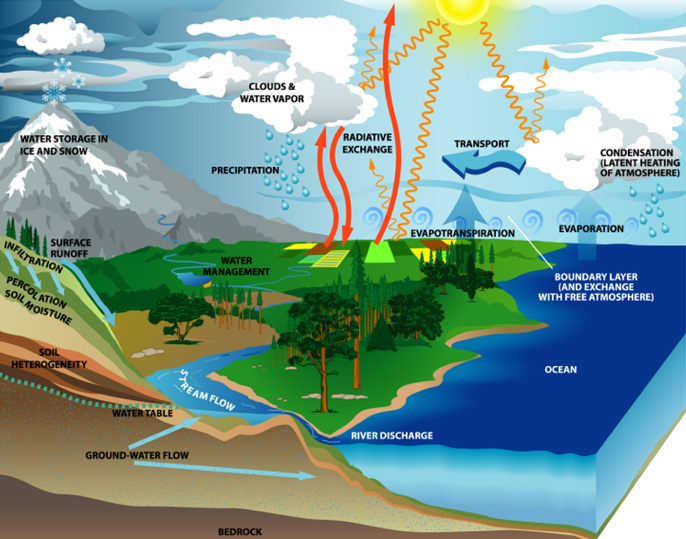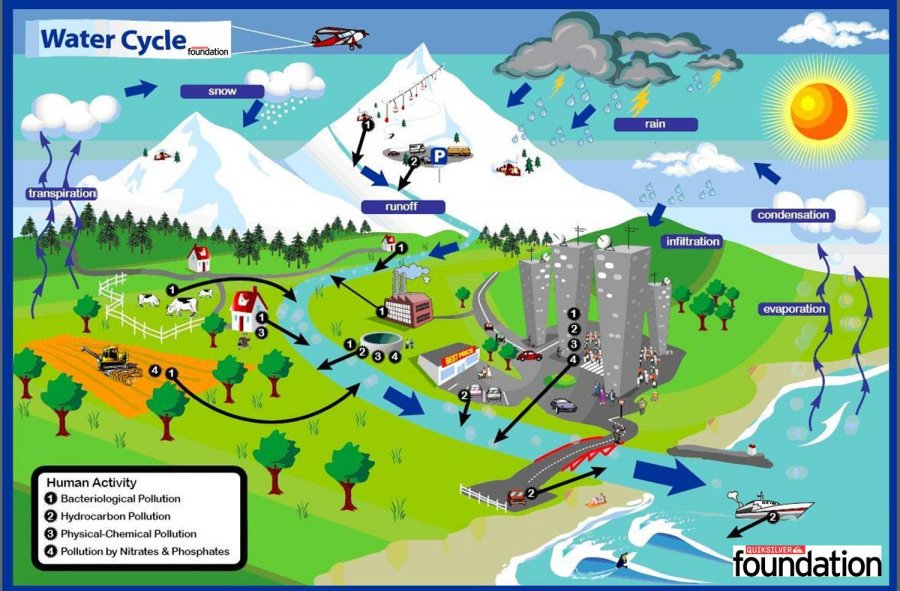|
There is a somewhat finite amount of water on our planet that has been used over and over and over. Comets bring our only fresh supply. Water vapor moves through the atmosphere, some of it condensing (turning to liquid water) to form clouds and precipitation. When this precipitation reaches land surfaces in and around the Celery Bog, the water can seep into the soil (infiltration) or move across the surface (runoff). Some of the water that infiltrates cannot travel down through the underlying till (dense glacial sediments) layers, thus it becomes shallow groundwater that helps keep the marsh wet in the dry part of the year. However, some of the water trickles through layers of till with intermingled lenses of sand and gravel, and eventually the water reaches aquifers (groundwater).
This cycle is made up of a few main parts: evaporation (and transpiration) condensation precipitation collection
Evaporation: Evaporation is when the sun heats up water in rivers or lakes or the ocean and turns it into vapor or steam. The water vapor or steam leaves the river, lake or ocean and goes into the air. Do plants sweat? Well, sort of.... people perspire (sweat) and plants transpire. Transpiration is the process by which plants lose water out of their leaves. Transpiration gives evaporation a bit of a hand in getting the water vapor back up into the air.
Precipitation: Precipitation occurs when so much water has condensed that the air cannot hold it anymore. The clouds get heavy and water falls back to the earth in the form of rain, hail, sleet or snow.
When water falls back to earth as precipitation, it may fall back in the oceans, lakes or rivers or it may end up on land. When it ends up on land, it will either soak into the earth and become part of the “ground water” that plants and animals use to drink or it may run over the soil and collect in the oceans, lakes or rivers wh ere the cycle starts |
Авторські права | Privacy Policy |FAQ | Партнери | Контакти | Кейс-уроки
© Автор системы образования 7W и Гипермаркета Знаний - Владимир Спиваковский
При использовании материалов ресурса
ссылка на edufuture.biz обязательна (для интернет ресурсов -
гиперссылка).
edufuture.biz 2008-© Все права защищены.
Сайт edufuture.biz является порталом, в котором не предусмотрены темы политики, наркомании, алкоголизма, курения и других "взрослых" тем.
Ждем Ваши замечания и предложения на email: 
По вопросам рекламы и спонсорства пишите на email: 










